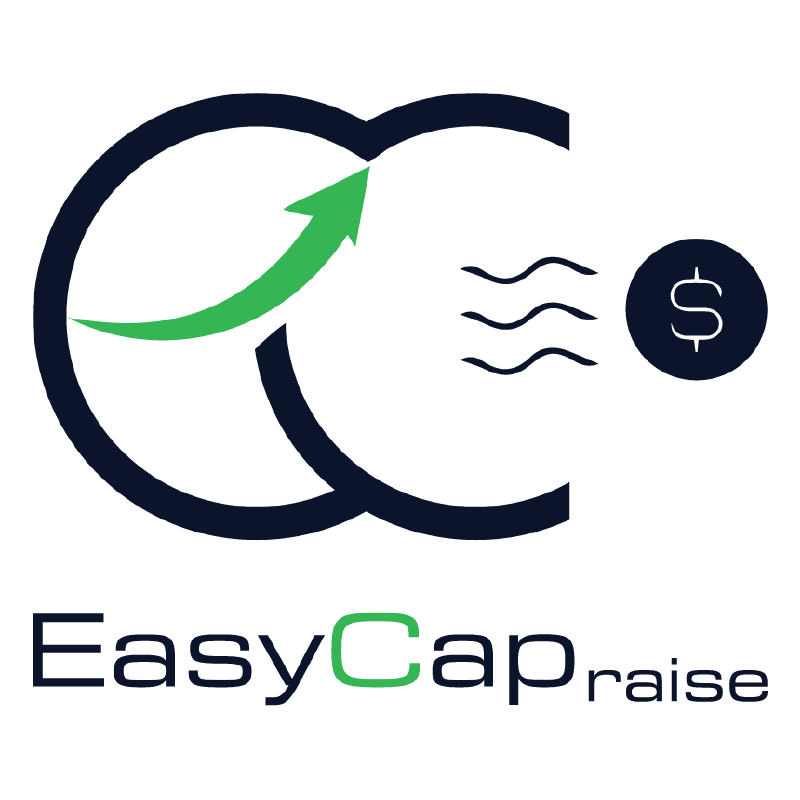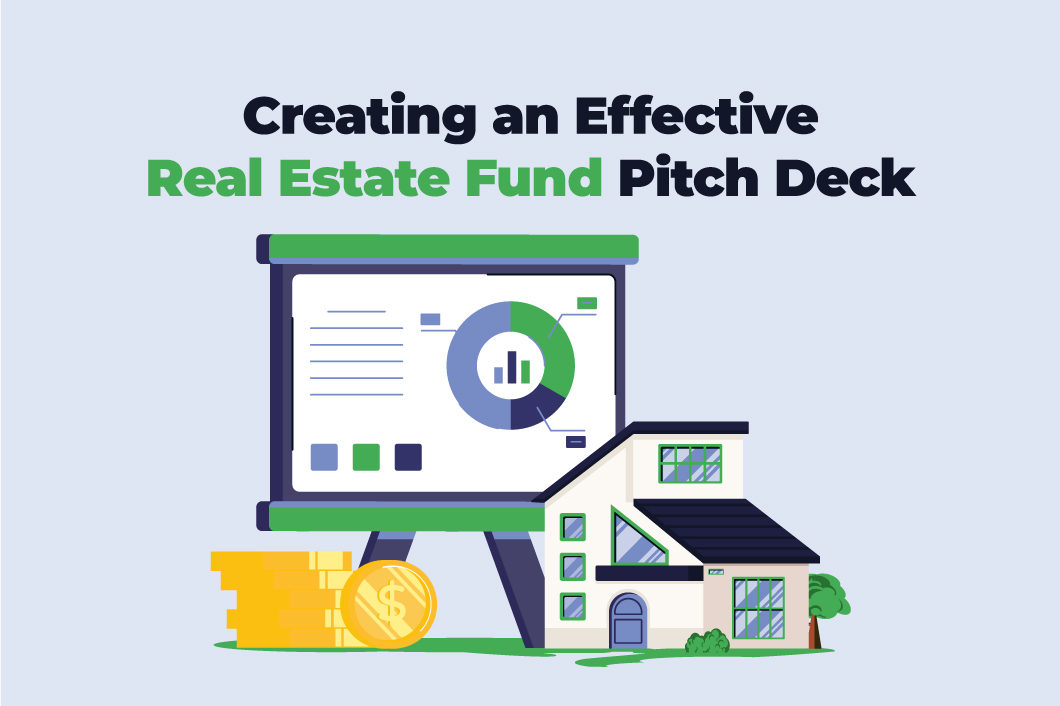Creating an Effective Real Estate Fund Pitch Deck
When it comes to attracting investors and securing funding for a real estate project, a well-crafted pitch deck can make all the difference. A pitch deck serves as a powerful tool that concisely presents the key aspects of your real estate fund and highlights its unique value proposition. In this article, we will explore the essential elements of creating an effective real estate fund pitch deck that captures investors’ attention and convinces them to partner with you.
- Investment Thesis for Your Real Estate Fund Pitch Deck
- Offering Summary - Real Estate Fund Pitch Deck
- The Importance of Investment Highlights on Your Real Estate Fund Pitch Deck
- Property & Market
- Sub-Market & Location Advantages
- Nearby Attractions
- Property Characteristics
- Exterior & Interior
- Unit Mix
- Fund Process & Strategy
- FAQs
- Conclusion
Investment Thesis for Your Real Estate Fund Pitch Deck
The investment thesis forms the foundation of your real estate fund pitch deck. It outlines your overarching strategy and the rationale behind your real estate fund. Clearly articulate your fund’s objectives, target market, and investment approach. Explain how your fund aims to generate returns and mitigate risks.
Offering Summary – Real Estate Fund Pitch Deck
In this section, provide a concise summary of your real estate fund’s offering. Outline the investment opportunity you are presenting to potential investors, emphasizing the key benefits and value proposition. Clearly state the investment size, expected returns, and any unique features or incentives that set your fund apart from others in the market.
The Importance of Investment Highlights on Your Real Estate Fund Pitch Deck
Under this heading, highlight the key strengths and advantages of your real estate fund. Showcase your track record, successful projects, and notable achievements. Include information about your team’s experience, expertise, and qualifications, as well as any industry affiliations or recognitions. Present compelling data and statistics that support your investment thesis and demonstrate the potential for success.
Explain the timing and market conditions that make your real estate fund particularly attractive. Discuss any relevant trends, market insights, or economic factors that create a favorable environment for investment. Address why investors should consider allocating their capital to your fund at this specific time and how it aligns with their investment goals.
Property & Market
Market Overview
Provide a comprehensive overview of the target market for your real estate fund. Include relevant demographic information, market size, and growth projections. Discuss the market dynamics, such as supply and demand trends, rental rates, and occupancy rates. Present market research data and analysis to support your assertions and highlight the attractiveness of the market.
Sub-Market & Location Advantages
Zoom in on the specific sub-market where your real estate investments will be focused. Describe the location’s unique advantages, such as proximity to transportation hubs, amenities, or emerging developments. Discuss any favorable regulatory or zoning conditions that may enhance the investment potential of the area.
Nearby Attractions
Highlight the nearby attractions and amenities that add value to your real estate properties. This can include shopping centers, schools, parks, entertainment venues, or cultural landmarks. Emphasize how these attractions contribute to the desirability and long-term growth prospects of your investments.
Property Characteristics
Provide a detailed description of the physical characteristics of the properties in your real estate fund. Include information on property types, sizes, conditions, and architectural features. Showcase high-quality images or renderings of the properties to give investors a visual representation of the assets they would be investing in.
Exterior & Interior
Under this heading, elaborate on the exterior and interior design elements of the properties. Discuss any unique architectural features, amenities, or upgrades that enhance the properties’ appeal and marketability. Use visual aids such as floor plans or virtual tours to help investors visualize the properties’ layout and potential.
Unit Mix
Explain the unit mix within your real estate fund’s portfolio. Describe the different types of units or spaces available, such as residential apartments, commercial offices, or retail units. Provide information on the size, configuration, and market demand for each type of unit. Discuss the rental rates or potential sales prices to demonstrate the income-generating potential of the fund.
Fund Process & Strategy
Business Plan
Present a clear and detailed business plan that outlines your real estate fund’s operational and investment strategies. Describe how you identify and source investment opportunities, conduct due diligence, and execute transactions. Highlight your risk management approach and how you plan to monitor and mitigate potential risks throughout the investment lifecycle.
Acquisition Summary
Provide an overview of the acquisition process for properties in your real estate fund. Explain your criteria for selecting properties, the negotiation and purchase process, and any value-add strategies you employ to maximize returns. Discuss your exit strategies for each investment, including potential timelines and methods for divestment.
Financing Summary
Outline your financing strategy for the real estate fund. Discuss how you plan to raise capital, whether through equity contributions, debt financing, or a combination of both. Highlight any relationships or partnerships with lenders or financial institutions that enhance your ability to secure favorable financing terms. Explain how you plan to structure investor returns and distribute profits.
Partnerships
Under this heading, discuss any strategic partnerships or collaborations that support your real estate fund. Highlight relationships with developers, property management firms, construction companies, or other industry stakeholders. Explain how these partnerships contribute to the fund’s success and provide added value to investors.
Projected Return
Present a comprehensive analysis of the projected returns for your real estate fund. Provide detailed financial forecasts, including projected cash flows, net operating income, and return on investment. Use various scenarios and sensitivity analyses to demonstrate the fund’s resilience to market fluctuations and potential upside opportunities.
Exit Strategy
Explain your exit strategy for the real estate fund’s investments. Discuss the potential avenues for divestment, such as selling properties individually, exiting through a public offering, or selling the entire portfolio to a strategic buyer. Present case studies or examples of successful exits from previous projects to showcase your team’s ability to generate attractive returns for investors.
Proof of Success
Under this heading, provide evidence of your real estate fund’s past successes and accomplishments. Showcase track records, case studies, and testimonials from satisfied investors or partners. Highlight any industry recognition or awards that validate the performance and reputation of your fund.
Appendix
Include additional supporting materials in the appendix section of your real estate fund deck. This can include floor plans, market research reports, legal documentation, or any other relevant information that enhances investors’ understanding of the fund and its investment thesis.
Floor Plan
Provide detailed floor plans for the properties in your real estate fund. Clearly label the different units, common areas, and amenities. Use visuals and annotations to help investors visualize the layout and potential of the properties.
Case Study
Include a comprehensive case study that showcases the success of a previous real estate project. Describe the investment thesis, execution strategy, and financial outcomes. Use this case study as a tangible example to illustrate your fund’s ability to deliver attractive returns.
Streamline Your Capital-Raising Process
Ready to streamline your capital-raising process and save valuable time? Let Easy Capraise take care of your capital-raising journey from start to finish. Our experienced team will assist you in creating a compelling plan pitch deck, preparing all necessary documents, identifying potential investors, and securing initial meetings.
Don’t waste hundreds of hours trying to navigate the complex world of fundraising on your own. Trust Easy Capraise to handle the time-consuming tasks, allowing you to focus on what you do best – growing your business.
Get started today by contacting us at [email protected] or visit our website at www.easycapraise.com. Let us help you secure the funding you need efficiently and effectively.
Remember, success awaits those who take action. Take the first step towards a successful capital raise with Easy Capraise.
FAQs
How important is a pitch deck to real estate fundraising?
The pitch deck plays a crucial role in real estate fundraising because it serves as a powerful communication tool to convey the key aspects of your real estate investment opportunity. A well-crafted pitch deck enables you to concisely present your investment thesis, showcase the value proposition of your real estate project, and capture the attention of potential investors. It provides a structured overview of your strategy, track record, market analysis, financial projections, and exit plans, helping investors understand the potential returns and risks associated with the investment. A compelling pitch deck can significantly increase your chances of securing funding and attracting the right partners to fuel the success of your real estate venture. Therefore, dedicating time and effort to creating a comprehensive and visually appealing pitch deck is essential for effectively communicating your real estate investment opportunity to potential investors.
What should be included in a real estate investment pitch deck?
A real estate investment pitch deck should include several key components to effectively convey your investment opportunity to potential investors. Here are some real estate investment pitch deck examples:
Executive Summary: Provide a concise overview of the investment opportunity, highlighting the key points of your real estate project.
Investment Thesis: Clearly articulate your investment strategy, target market, and the rationale behind your investment decisions.
Market Analysis: Present a comprehensive analysis of the target market, including market size, trends, demographics, and competitive landscape.
Property Overview: Describe the properties within your investment portfolio, including their location, type, size, and unique features.
Financial Projections: Provide detailed financial forecasts, including projected cash flows, return on investment, and exit strategies.
Team and Track Record: Showcase your team’s experience, expertise, and successful track record in real estate investments.
Risk Assessment: Identify and discuss the potential risks and challenges associated with the investment, along with your risk mitigation strategies.
Competitive Advantage: Highlight your unique value proposition and any competitive advantages that differentiate your real estate investment from others in the market.
Exit Strategy: Outline your planned exit strategies for investors, whether through a sale, refinancing, or other methods.
Appendix: Include any additional supporting materials, such as property appraisals, market research reports, or case studies.
By including these components in your real estate investment pitch deck, you can provide potential investors with a comprehensive understanding of your investment opportunity and increase your chances of securing funding for your project.
How can a commercial real estate investment pitch deck attract potential investors?
A well-crafted commercial real estate investment pitch deck can be a powerful tool to attract potential investors. Here are some key factors that can make your pitch deck appealing to investors:
Clear Value Proposition: Clearly communicate the unique value proposition of your commercial real estate investment. Highlight the potential returns, growth marketing opportunities, and competitive advantages that set your project apart from others in the market.
Market Analysis: Include a comprehensive analysis of the target market, showcasing its growth potential, demand-supply dynamics, and any emerging trends. Provide data-driven insights to support your market projections.
Property Details: Provide detailed information about the commercial properties within your investment portfolio. Include property location, type, size, amenities, and any notable features that make them attractive investment opportunities.
Financial Projections: Present a realistic and well-supported financial forecast that demonstrates the potential return on investment. Include projected cash flows, net operating income, and any assumptions made in the analysis.
Track Record and Expertise: Showcase your team’s experience and successful track record in commercial real estate investments. Highlight any past projects, relevant achievements, and industry affiliations to instill confidence in potential investors.
Risk Assessment and Mitigation: Identify and address potential risks associated with commercial real estate investment. Clearly articulate your risk management strategies and demonstrate how you plan to mitigate those risks.
Exit Strategy: Outline your planned exit strategies, such as a sale, refinancing, or lease agreement. Provide a timeline and potential return scenarios to give investors a clear understanding of the exit options and potential profits.
Visual Presentation: Use visually appealing graphics, charts, and images to enhance the readability and impact of your pitch deck. A well-designed and professional-looking pitch deck can captivate investors’ attention and leave a lasting impression.
By incorporating these elements into your commercial real estate investment pitch deck, you can effectively showcase the investment opportunity and attract potential investors who align with your project’s goals and vision.
Conclusion
Creating an effective real estate fund pitch deck requires careful consideration of the key elements that investors seek. By crafting a compelling narrative, showcasing your team’s expertise and track record, and providing robust financial analysis, you can attract potential investors and secure the funding needed to realize your real estate investment goals.
Contact us
Good to have you here! If you have any queries, please leave your message. Our team will reach out soon:)
.








